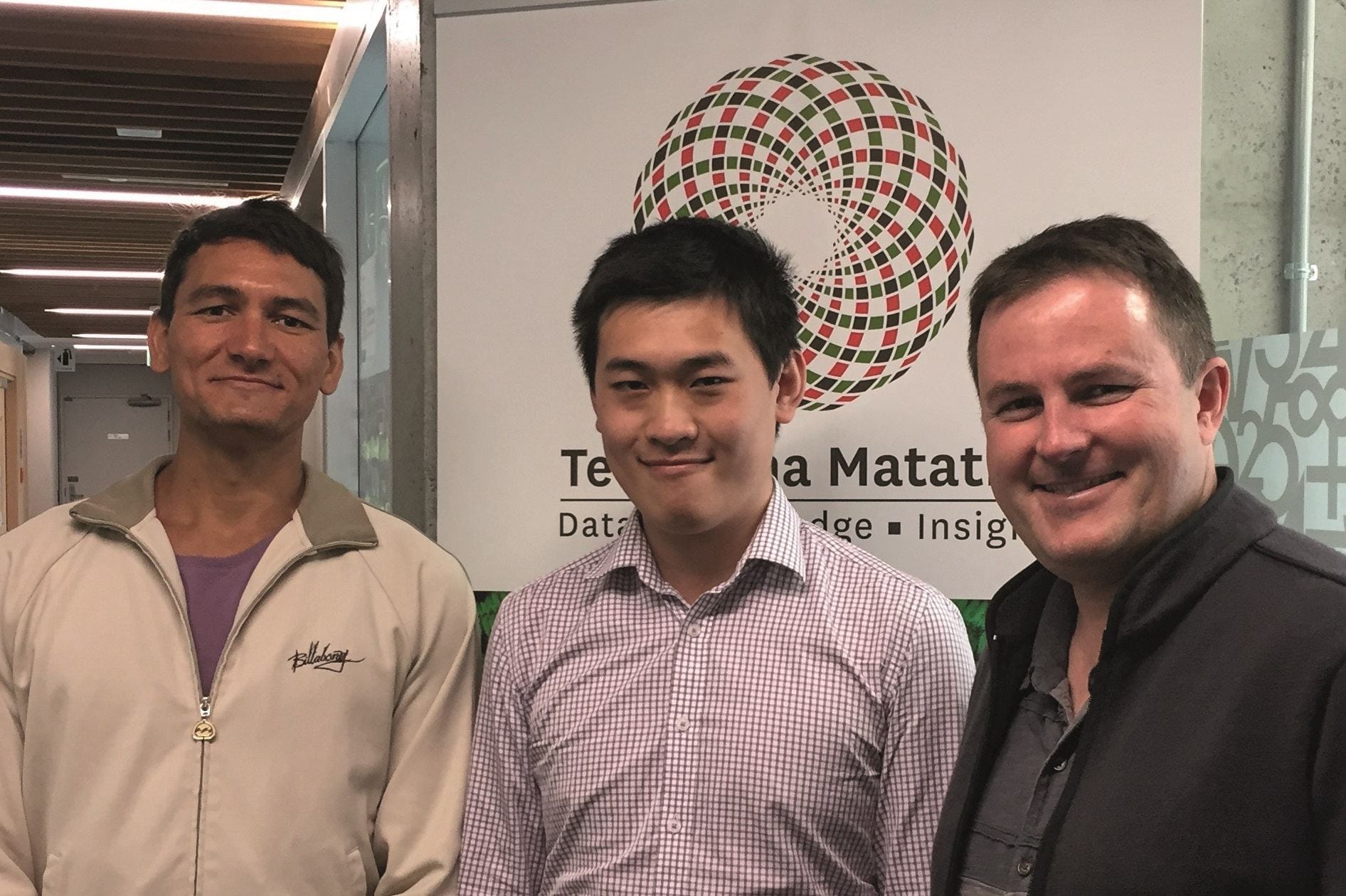In the summer of 2016-2017, Te Hiku Media and Te Pūnaha Matatini co-funded a number of student internships – work from which led to the development of Kōrero Māori – a project to teach machines how to speak te reo Māori.
One of the interns was Jamie Chow, a conjoint BComm/BEng (Honours) degree student from the University of Auckland. Jamie’s work on Te Hiku’s Data Analytics and Visualisation Project involved using online audience data to measure the performance of the organisation’s digital platform, matching it with other information such as demographics and geographical data.
Internship leads to ongoing employment opportunity
Following his 10-week summer internship, Jamie continued working on the project for Te Hiku in part-time employment over the course of 2017.
“We kept Jamie on board,” says Te Hiku’s R&D Scientist and Engineer Keoni Mahelona. “He had the internship then we hired him on contract for about 6 months or so. Just casually, furthering the work that he did for that project. That was really useful.”
Jamie was able to create visualisations of the data that allowed Te Hiku staff to quickly understand and interpret the behaviour of their audience. Staff can now immediately examine their content for audience engagement, allowing them to adapt their future programming.
“The project mainly involved developing tools to obtain usage data for their online platform and present this data in a suitable form to their staff, producers, and content creators,” says Jamie.
“My project was very self-driven so it was always challenging and engaging. It was clear even from the beginning that I would learn a lot throughout the project. Te Hiku Media seemed to be pleased with the results and I’m happy they’re using and benefiting from my work.
“Overall, it was a great experience and I’m grateful that I had the opportunity to work with some awesome people.”

Jamie Chow, Te Pūnaha Matatini 2016-17 summer student intern (centre), with Keoni Mahelona, Te Hiku Media (left) and Shaun Hendy, Te Pūnaha Matatini (right).
About the Kōrero Māori project
Te Hiku’s Data Analytics and Visualisation Project led to discussions about the need for ICT tools for te reo Māori. Working together, Keoni’s team developed the Kōrero Māori project to create computer language models for te reo Māori – the basic tools which will allow machines to be able to transcribe and speak the language.
Keoni is optimistic about how Te Hiku and Te Pūnaha Matatini can collaborate in terms of research direction in the future.
“I do look forward to us continuing to work together… and doing research around Te Reo, language processing and also looking to the languages of the Pacific – because there’s a lot of similarities,” says Keoni. “If we can turn these into machine models, perhaps we can learn something about the evolution of our languages.
Keoni says that Te Pūnaha Matatini has been very helpful and open in terms of how the data are managed.
“It’s about managing data in a way that aligns with our tikanga and our values, as Māori and as a Māori organisation and as indigenous people. Our language is our culture. It’s our identity. We’re talking about giving that to a machine and I guess the question comes, well, who owns that data or who owns the machines that have access to that data,” explains Keoni.
“As indigenous people, we want to maintain some sovereignty… and Te Pūnaha Matatini has been helpful in terms of having quite a broad and open understanding of those aspects of the project.”

